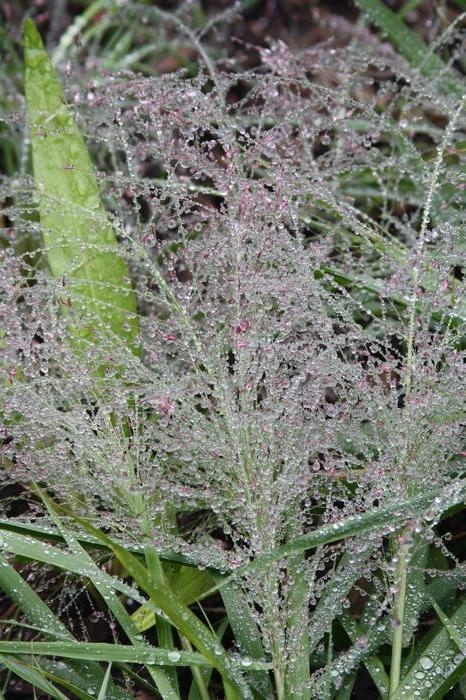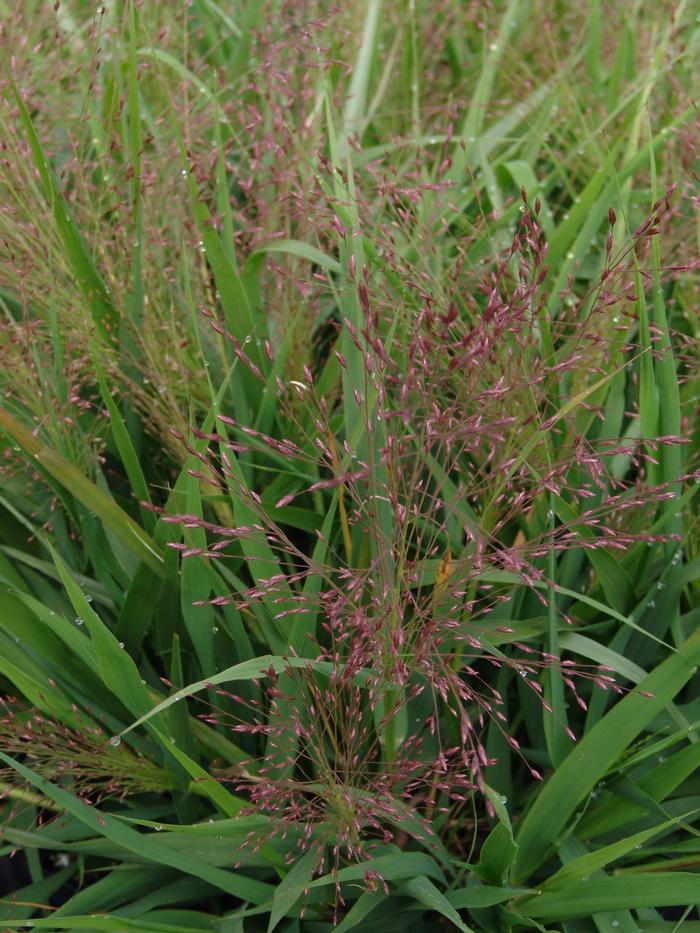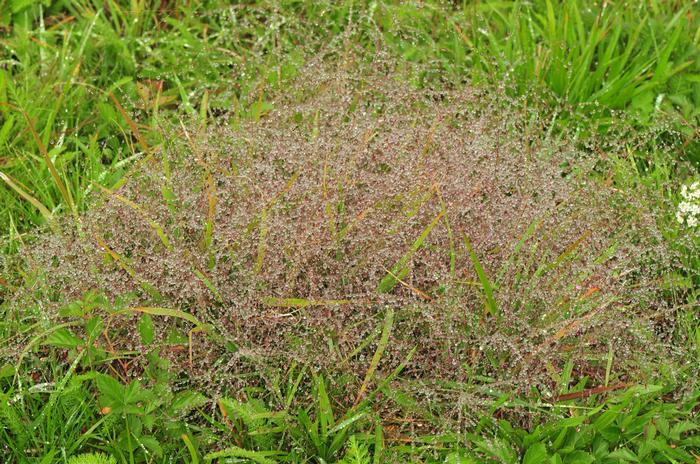General Description
Bloom Description: Paniculate blooms are bronzy, reddish-purple, sometimes drying to tan. From New Moon Nursery: "The individual spikelets are flattened, purplish and about ¼” long."
Growth Habit & Shape: A low, bunching perennial grass with a softly mounding habit, reaching 1 to 3 feet when in flower or fruit. It is often given the common name "tumble grass" because the panicles carrying the seed heads often break off from the plant and blow along the ground in the wind, aiding in seed dispersal.
Soil Preferences: Poor, average to dry soils of medium to coarse texture. Best performance in sandy or gravelly loam in full sun and hot, dry locations.
Root Description: Spreads slowly by rhizomes, to widths of about 3 feet. The roots themselves are fibrous and grow densely, extending to at least ¾ of a meter into the ground, depending on soil conditions.
Garden Uses: Plant in sunny, open, and low perennial borders, in meadows among other short-statured plants, on rain garden berms, as part of a lawn alternative matrix, or on hellstrips and roadsides.
Best Management & Maintenance: Burn or mow in early spring to limit competition from cool-season plants. If reseeding is undesirable, cut flower stalks to the ground before fruits mature in late summer or early fall.
Common Problems: Abiotic: rich, moist soils are not conducive to growth, and lovegrass will be out-competed by other species.
Benefits
Ornamental Value: Creates billowing, fluffy texture and rich color as the inflorescence turns bronzy purple/red and the leaves senesce in late summer.
Wildlife Benefits: Supports the paradoxical grass moth as a larval host plant; this grass is exceptionally popular with insect herbivores such as leafhoppers. Birds use the dry panicles for nesting.
Other Practical/Environmental Benefits: Robust erosion control on roadsides and hillsides; tolerance to black walnut.
Use in place of: Other early successional grasses like Digitaria spp. (crabgrasses) and European lawn species such as Poa pratensis (Kentucky bluegrass).
Ecology
Habitat:
Per Illinois Wildflowers: : "hill prairies, sand prairies, upland savannas and sandy savannas, limestone glades, sandy or gravelly areas along railroads, sandy or gravelly roadsides, sandy paths, and fields. Disturbed sandy areas are preferred.”
Response to Disturbance: This grass is an early-successional species that is mainly present in disturbed habitats. It can easily be outcompeted by taller and longer-lived perennials, trees and shrubs, and requires open soil to reseed. As per USDA Plant Fact sheet this plant "increases under controlled annual burning."
Native State Distributions:
Canada: ON, QC
USA: AL, AR, AZ, CT, DC, DE, FL, GA, IA, IL, IN, KS, KY, LA, MA, MD, ME, MI, MN, MO, MS, NC, ND, NE, NH, NJ, NM, NY, OH, OK, PA, RI, SC, SD, TN, TX, VA, VT, WI, WV, WY
Wetland indicator status: UPL
References
- USDA PLANTS database
- New Moon Nursery plant profile
- Ladybird Johnson Wildflower Center Plant Finder Database
- Brown, R., Percivalle, C., Narkiewicz, S., & DeCuollo, S. (2010). Relative Rooting Depths of Native Grasses and Amenity Grasses with Potential for Use on Roadsides in New England, HortScience horts, 45(3), 393-400.
- National Wildlife Federation Native Plant Finder
- Illinois Wildflowers, Dr. John Hilty
- NatureServe. 2020. NatureServe Explorer: An online encyclopedia of life [web application]. Version 7.2. NatureServe, Arlington, Virginia.
- GoBotany
- Alvarez, E., Scheiber, S..M., Beeson, R. C., & Sandrock, D. R. (2007). Drought Tolerance Responses of Purple Lovegrass and ‘Adagio’ Maiden Grass, HortScience horts, 42(7), 1695-1699.
- North Creek Nurseries plant profile
- Anna Fialkoff, personal communication
Return to Top




